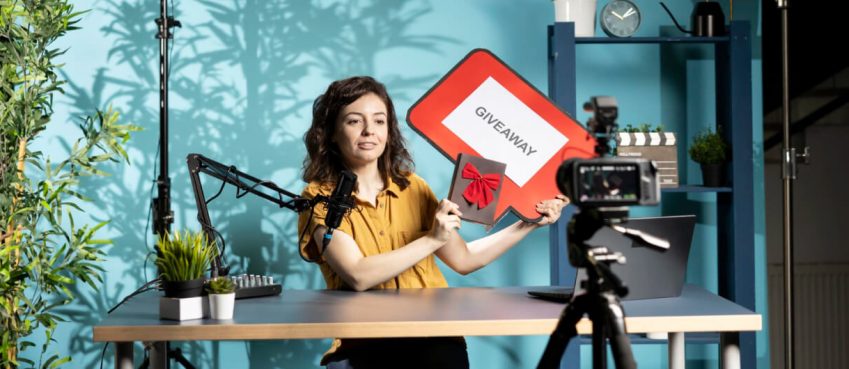
Here’s how computer vision affects marketing
Computer vision has made great strides in recent years, opening up new opportunities for marketing. The system scans images and correctly identifies elements and items within them using AI/ML.
Computer vision is a technique that digital systems use to recognize and make sense of images. This is analogous to the way humans see and interpret the world around us with their eyes and minds.
You’re likely familiar with many aspects related to computer vision through social media. Computer vision algorithms can deconstruct and transform visual content to metadata. This metadata can then be stored, categorized, and analyzed in the same manner as any other dataset.
What is Computer Vision used in Marketing?
Smarter Online Merchandising
Generally, eCommerce merchandising is all about tagging. Multiple tags are included with each product. This allows customers to search for certain characteristics and also allows recommendation engines to find similar products.
Online shops can use the algorithm to highlight a product that is particularly important.
Sentient Aware, an AI-based software, can now enable visual product discovery. This eliminates the need for any metadata and displays related products based solely on visual affinity. Instead of using traditional filtering methods, customers can now choose a product that interests them and be presented with visually similar products.
Also read: Top 10 Zapier Alternatives & Competitors In 2025
More Effective Targeting
The same technology used for merchandising can also be used to retarget. Display ads for a product can be used to target website traffic after the abandonment of the cart. This is a very effective strategy, but also quite brutal.
If a buyer has purchased a product online, retailers may not be clear. Dynamic creativity that displays a variety of products may prove more effective.
Real-World Product Discovery
Pinterest recently launched a Lens feature, which is similar to Shazam but focuses on visual content. Customers can point their camera at something and run a Pinterest search.
This information can be used to find a supplier for a particular piece of furniture or to create a recipe for an uncommon unknown vegetable.
The social media platform has offered visual search functionality since 2015. This allows users to select a section of an image to search for relevant items. Lens, however, has taken this further by allowing brands and photographers to highlight products within images.
Also read: Apple Watch Not Connecting To Phone: Here’s The 5 Reasons and Fixes!
Image-Aware, Social Listening
Brands want to be mentioned on the internet about their products and services. Writing is just a fraction of the content people share on social media. Photos and videos can be equally important.
Existing firms, such as Ditto and gum, offer social listening services that detect company logos. This assists community manager in identifying positive or negative feedback.
Experiences in a Frictionless Shop
Amazon Go was the most talked about product in December 2016. The barcode from their Amazon Go app is used to enter the store.
The computer vision technology then tracks the user around the store (possibly in conjunction with some kind of phone monitoring though Amazon has not given further details). Sensors on the shelves detect when the customer chooses a product.
Once you have everything you need, you can just walk out of the door. The Go app tracks what you bring with you. Amazon’s Seattle Concept Shop appears to have opened the door for machine vision to help ease the pain of checkout.
Also read: Snapchat Premium: How To Make A Snapchat Premium App?
Retail Analytics
Density is an innovative start-up that employs a small piece to monitor people’s movement as they move around their work environments.
These data can be used to measure how busy a shop or wait times, and how long they take.
While computerized footfall counters are not new, advances in computer vision have enabled people to track smart enough to optimize merchandising.
Emotional Analytics
MediaCom announced in January 2016 that Realeye’s facial identification and analytics technology would be used in content testing and media relations.
This technology records consumers’ reactions to advertisements and information using remote panels of people and their webcams.
Mikhel Jaatma of Realeyes says that emotional intelligence is more cost-effective than traditional internet surveys and focus groups. It also gets direct responses rather than relying upon subjective or assumed opinions.
Also read: How To Check Body Temperature With iPhone?
Image Search
Automated image labeling will become possible as computer vision improves. This could eliminate the need to manually label images in inconsistent ways, which would allow for more precise and faster picture organization.
Video can be overwhelming in terms of the data available. How we acquire and store imagery could also change dramatically.
Although it’s still far off, many people already know the capabilities of Google Photos for picture search. This can be used to find thousands of objects and reverse image searches in Google search results.
Augmented Reality
Augmented reality is being rapidly considered as a potential next stage in mobile computing. This includes Snapchat Lenses and yet unproven technology that incorporates headsets such as the Hololens.
Also read: Best 3DS Games In 2024 (#3 Is Best) | Best Nintendo Games To Right Now
Conclusion
Although computer vision systems have much to learn in terms of accuracy, dependability, and acceptance, they are making significant progress in recent years.
This is enough to draw marketers’ attention. Marketers can use this technology to explore the many benefits and other uses outlined above. As technology improves and society becomes more dependent on visual communication, we can expect computer vision to be used in many creative and innovative ways.
Top 10 News
-
01
[10 BEST] AI Influencer Generator Apps Trending Right Now
Monday March 17, 2025
-
02
The 10 Best Companies Providing Electric Fencing For Busines...
Tuesday March 11, 2025
-
03
Top 10 Social Security Fairness Act Benefits In 2025
Wednesday March 5, 2025
-
04
Top 10 AI Infrastructure Companies In The World
Tuesday February 11, 2025
-
05
What Are Top 10 Blood Thinners To Minimize Heart Disease?
Wednesday January 22, 2025
-
06
10 Top-Rated AI Hugging Video Generator (Turn Images Into Ki...
Monday December 23, 2024
-
07
10 Top-Rated Face Swap AI Tools (Swap Photo & Video Ins...
Friday December 20, 2024
-
08
10 Exciting iPhone 16 Features You Can Try Right Now
Tuesday November 19, 2024
-
09
10 Best Anatomy Apps For Physiologist Beginners
Tuesday November 12, 2024
-
10
Top 10 Websites And Apps Like Thumbtack
Tuesday November 5, 2024







